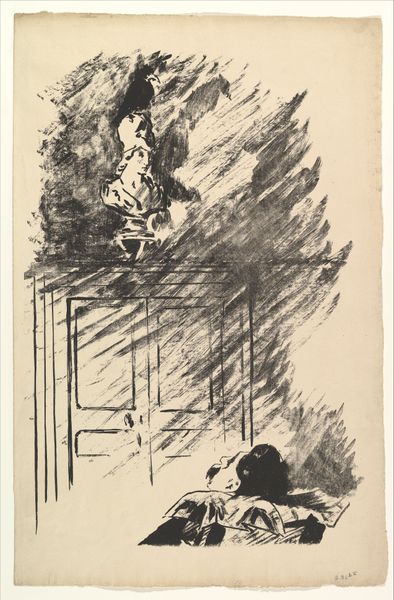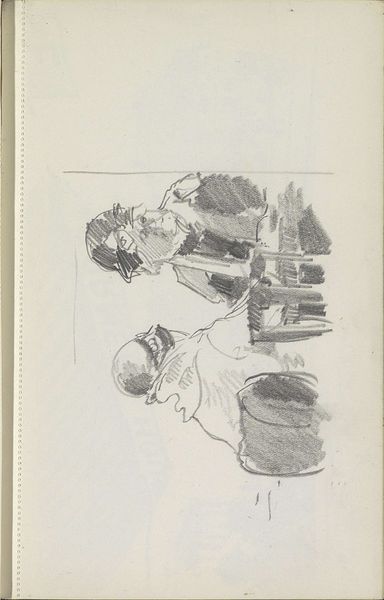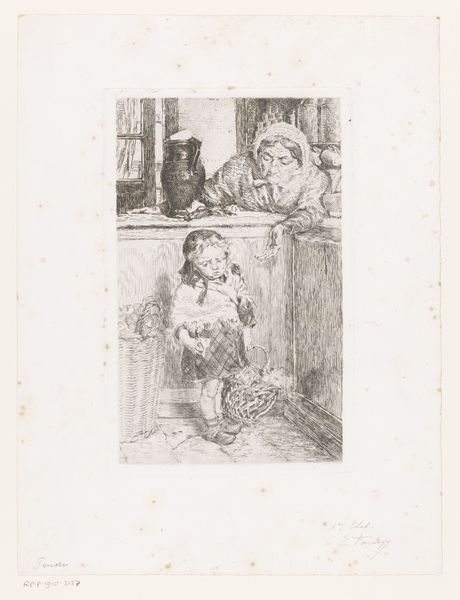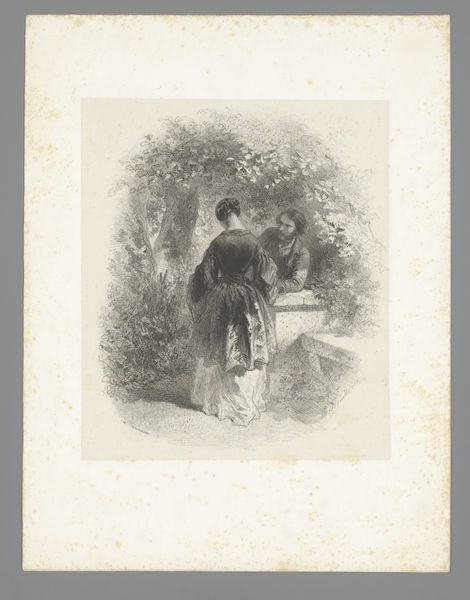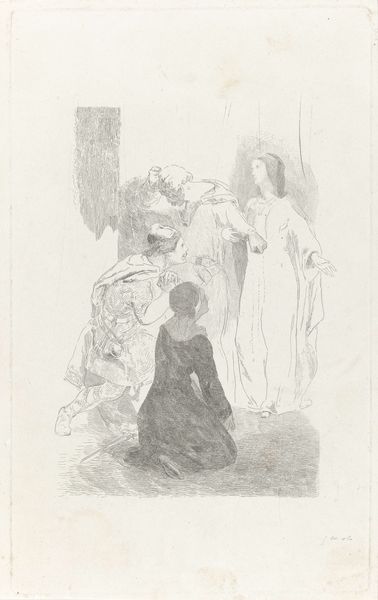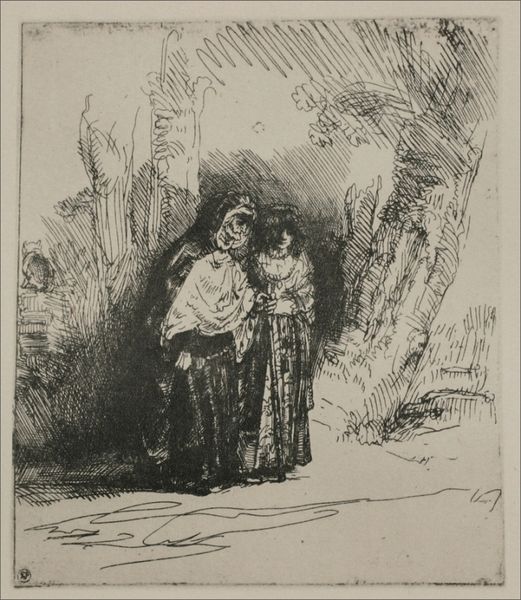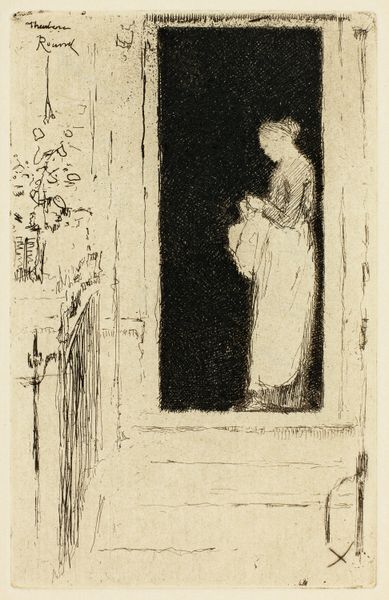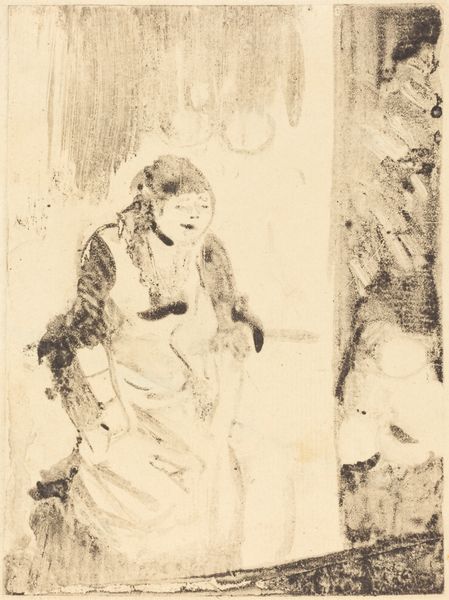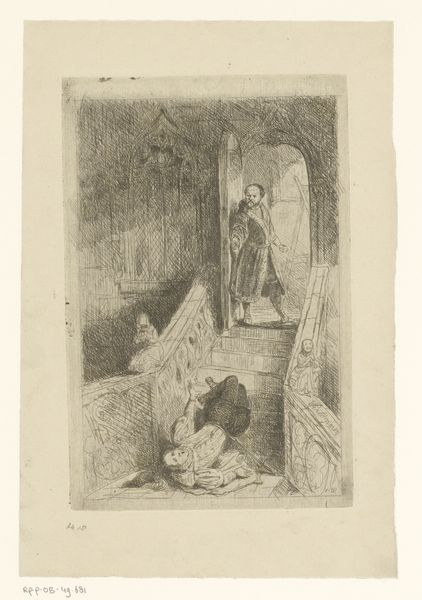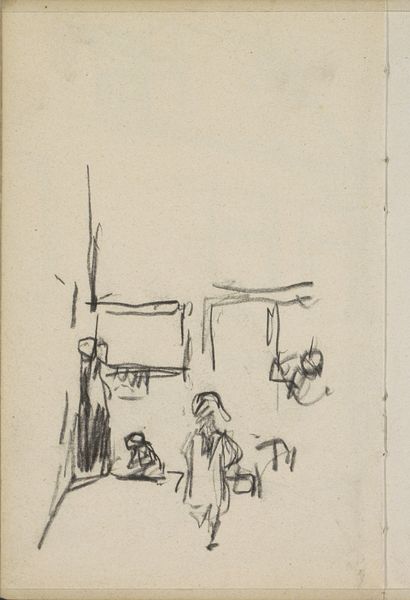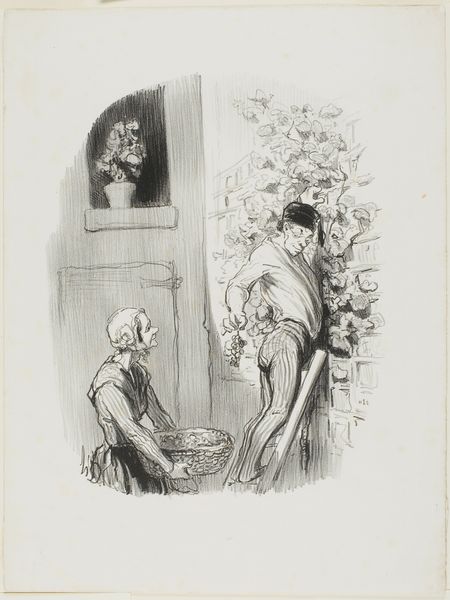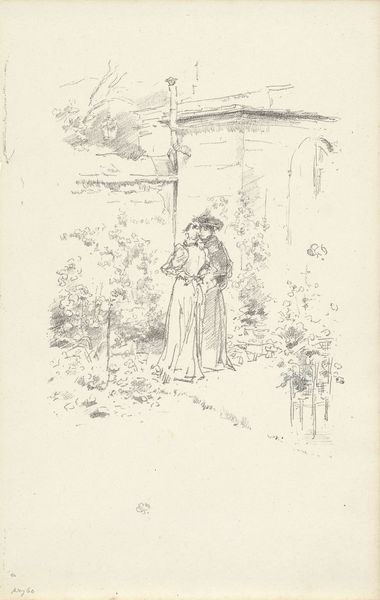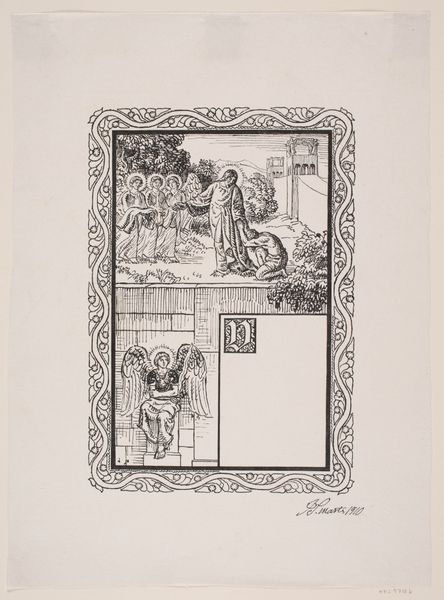
Mlle Bécat at the Café des Ambassadeurs: Three Motifs c. 1875
0:00
0:00
drawing, lithograph, print, paper, ink
#
portrait
#
drawing
#
lithograph
# print
#
impressionism
#
paper
#
ink
#
genre-painting
Dimensions: 293 × 245 mm (image); 352 × 274 mm (sheet)
Copyright: Public Domain
Editor: Here we have Degas' "Mlle Bècat at the Café des Ambassadeurs: Three Motifs," created around 1875. It’s a lithograph in ink on paper, currently at the Art Institute of Chicago. The grouping of these seemingly disparate images feels a little unsettling to me, like fragmented memories. What's your read? Curator: Unsettling is a good starting point. Degas was deeply engaged with representing modern life, particularly the experiences of women. Consider the Café des Ambassadeurs – a space of entertainment, but also of social performance. How do these "motifs" speak to the societal expectations placed on women like Mlle Bècat? Editor: So you're suggesting these aren't just random sketches but are deliberate fragments revealing something about her social role? The one on the bottom left feels more exposed. Curator: Exactly. And note Degas's choice of lithography. It allowed for a certain immediacy and reproducibility, mirroring the way women's images were circulated and consumed in the 19th century. This was the time of the flâneur, who observed and categorized the city and its inhabitants. Where do women fit into that power dynamic? Editor: So is Degas complicit, or is he critiquing this "male gaze," by showing these various vignettes? Curator: That's precisely the complex question his work invites us to consider. Is he simply capturing reality, or is he subtly challenging the ways women are perceived and judged in public spaces? Notice the emphasis on capturing her actions but not making eye contact with us; consider if the power lies with us, or the subject. Editor: That’s fascinating. I came in thinking this was just a study, but it sounds like there’s much more going on in terms of gender, representation, and the dynamics of modern Parisian life. Curator: Indeed. By situating Degas within his historical context, we can understand the multifaceted layers of his work. It allows us to reconsider the societal structures reflected and reinforced (or sometimes resisted) within art. Editor: Thanks. Now I can see these "motifs" as pieces of a much larger conversation.
Comments
No comments
Be the first to comment and join the conversation on the ultimate creative platform.
